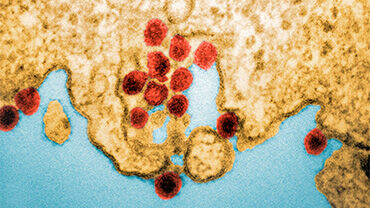Epidemiological update: Chikungunya – Europe - 2017
Since August 2017, France and Italy have reported the autochthonous transmission of chikungunya virus, respectively in the Var department, France and the Lazio region, Italy. The two events are involving strains from different origin and therefore are not related.

Weekly update
Since the previous CDTR and as of 22 September 2017, Italy reported 10 additional confirmed cases in Rome (5) and Anzio (5). Since the previous CDTR, France did not report additional cases.
Epidemiological summary
The two events described below in France and in Italy are two distinct events. There is epidemiological and microbiological evidence highlighting that the clusters in France and in Italy are not related.
On 11 August 2017, France reported an outbreak of autochthonous chikungunya cases in the Var department, southern France through the Early Warning and Response System (EWRS). As of 21 September, France has reported nine cases (seven confirmed and two probable) being part of a cluster in Cannet-des-Maures. There are seven men and two women between 33 and 77 years old. Eight of the cases live in Cannet-des-Maures and one lives in a neighbouring commune (i.e. Brignoles). On 20 September, France reported a new cluster of two confirmed cases in Taradeau commune, which is 13 kilometres away from Cannet-des-Maures. Onset of symptoms were between 4 and 10 September 2017. There is an epidemiological link between the cases in Taradeau and Cannet-des-Maures, indicating that the two clusters are related. As published in the Eurosurveillance article "Preliminary report of an autochthonous chikungunya outbreak in France, July to September 2017" from 28 September, the virus circulating in France belongs to a East Central South African (ECSA) sub-lineage that includes isolates from the Central African region (e.g. Gabon, Republic of Congo). The virus isolated from the index patient is carrying the E1-A226V mutation. Full genome analysis is ongoing and the sequence will be submitted to GenBank.
As of 22 September, Italy reported 102 autochthonous chikungunya cases in the Lazio region: Anzio (75), Rome (24) and Latina (3). The media is reporting one case in the city of Formigine, Emilia-Romagna region and one case in Castelplanio city, Marche region. Both of them had a recent travel history to Anzio prior onset of symptoms. As published in the Eurosurveillance article "Detection of a chikungunya outbreak in Central Italy, August to September 2017" from 28 September, the virus circulating in Italy belongs to the East Central South African (ECSA) lineage and show 100% similarity to a strain involved in an ongoing epidemic in Pakistan. The virus isolated does not carry the E1-A226V mutation. The outbreak sequence is available in GenBank.
Sources: Lazio Region | media | Lazio region | France ARS PACA | France ARS PACA
ECDC assessment
The two outbreaks in France and Italy are unrelated and result from separate introductions of the virus, likely from Africa and from Asia respectively. Having concurrent, distinct outbreaks of chikungunya in France and Italy highlights that the environmental conditions in 2017 are favourable for the local transmission of introduced chikungunya virus strains. The detection of a new cluster in France, with epi-link to Cannet-des-Maures, is not unexpected. Response measures, including vector control, are being implemented. The fact that the strain harbours the E1-A226V mutation may explain the relative greater number of autochthonous cases observed this year compared to the 2010 outbreak in the same region (i.e. two cases reported in 2010). The conclusions of the latest ECDC rapid risk assessment published on 24 August 2017 on the “Cluster of autochthonous chikungunya cases in France” remain valid. In Italy, in areas where Aedes albopictus is established and where the environmental conditions are suitable, more cases might be identified in the near future. The likelihood of further transmission in the Lazio region is considered to be high. The fact that the strain does not carry the E1-A226V mutation would indicate a relative lower vector competence of Aedes albopictus for that strain. The conclusions of the latest ECDC rapid risk assessment published on 13 September 2017 on the “Cluster of autochthonous chikungunya cases in Italy” remain valid.
Actions
ECDC has published a rapid risk assessment on the cluster of autochthonous chikungunya cases in France on 24 August 2017 and a rapid risk assessment on the clusters of autochthonous chikungunya cases in Italy on 14 September 2017.







